 |
 |
 |
| |
ACCELERATED CEREBRAL BLOOD-FLOW REDUCTION AND BRAIN AGING IN PEOPLE LIVING WITH HIV PLWH associated with accelerated brain age
|
| |
| |
.....PLWH show accelerated structural brain aging which is associated with diminished psychomotor speed
...cerebral blood flow decline occurred with age for all - HIV- & HIV+ but those with detectable VL showed greater slope of decline than those with undetectable VL who had same decline a HIV- indicating that functional brain aging may depend on VL.
"Greater brain age from structural MRI was associated with diminished psychomotor speed regardless of serostatus or viral load AND may be an important determinant of cognitive preservation". Kalen Petersen
If you look at the graph of blood flow (the slide labeled "arterial spin labeling") you will see that many PWH (orange or red dots) have values at or above the green line, which represents the average blood flow for the HIV-negative population for a given age (this is also true of controls, we all have physiological differences, and usually they're in the normal range). When we say that "PWH have differences" we mean on average, and including people who definitely fall into the normal range too – even older people with HIV......likely that genetics & life experiences play a role (social determinants) but so does HIV & HIV-related factors.
CROI 2021 March 6-10 Reported by Jules Levin
Kalen Petersen1, Nicholas Metcalf1, Sarah Cooley1, Dimitre Tomov1, Florin Vaida2, Robert Paul3, Beau M. Ances1
1Washington University in St Louis, St Louis, MO, USA, 2University of California San Diego, La Jolla, CA, USA, 3University of Missouri St Louis, St Louis, MO, USA
Background: People living with HIV (PLWH) are characterized by altered brain structure and function. As they attain normal lifespans, it remains unclear whether HIV accelerates aging in select subgroups. Additionally, the relationship between viral load (VL) and brain aging has not been fully investigated.
Methods: Three groups were evaluated: HIV uninfected (HIV-) controls (n=206), PLWH with undetectable VL (≤50 copies/mL; n=230), and PLWH with detectable VL (>50 copies/mL; n=93).
A subset of individuals (n=201) completed longitudinal follow-up (mean=2.3 years post-baseline). T1- weighted structural imaging (TR/TE=2400/3.2ms) was used with a deep- learning algorithm to predict brain age based on a pre-trained model of healthy individuals. The gap between predicted and actual age (Δage) evaluated structural aging. Pseudo-continuous arterial spin labeling (TR/TE=3500/9.0ms, labeling=1500ms, post-labeling delay=1200ms) was obtained to calculate gray matter cerebral blood flow (CBF). Cognition was assessed with a 15-test battery that covered five domains. Mixed-effects linear models tested the prediction that detectable HIV VL was associated with accelerated aging as measured by greater reduction in CBF or increased structural Δage. Age, sex, and race were included as covariates. Relationships between cognition and CBF or Δage were explored.
Results: Age-associated CBF decline was not different between PLWH and HIV- controls.
However, CBF reduction was accelerated in PLWH who had detectable HIV VL vs. undetectable HIV VL (p=0.02, A). In general, PLWH had accelerated structural Δage increases vs. HIV- controls (p<0.001, B), while structural aging did not differ between PLWH who had detectable and undetectable HIV VL. These effects represented significant age*group interactions. PLWH as a whole had reduced performance in executive function, psychomotor speed, and language, and those with detectable HIV VL had greater impairment in psychomotor speed and language (p's<0.05). No association was observed between CBF and cognition. Across all participants, psychomotor slowing was associated with increased Δage (p<0.001).
Conclusion: Brain aging in PLWH included accelerated loss of gray matter perfusion and morphological alterations detected using machine learning. Cerebrovascular changes are sensitive to current HIV VL, while structural aging correlated with HIV serostatus but not HIV VL. Structural aging likely reflects cumulative gray and white matter degeneration, and is associated with cognitive function.
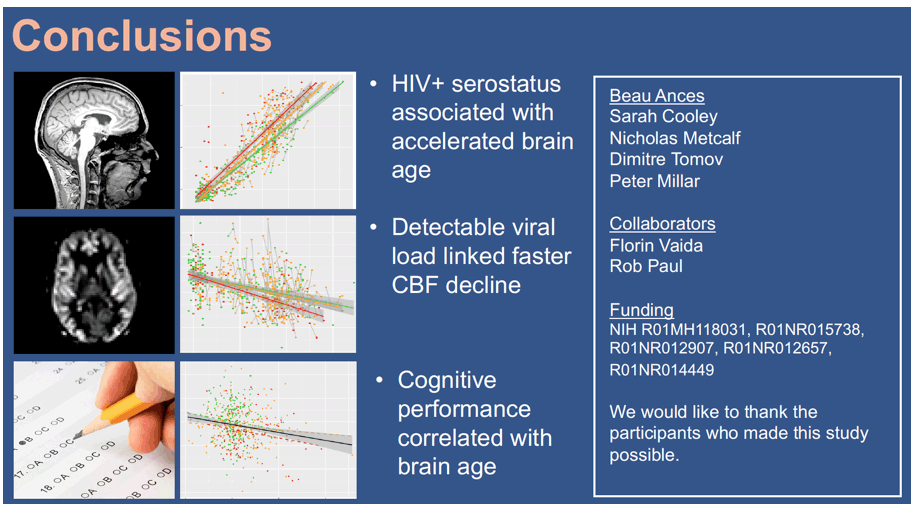
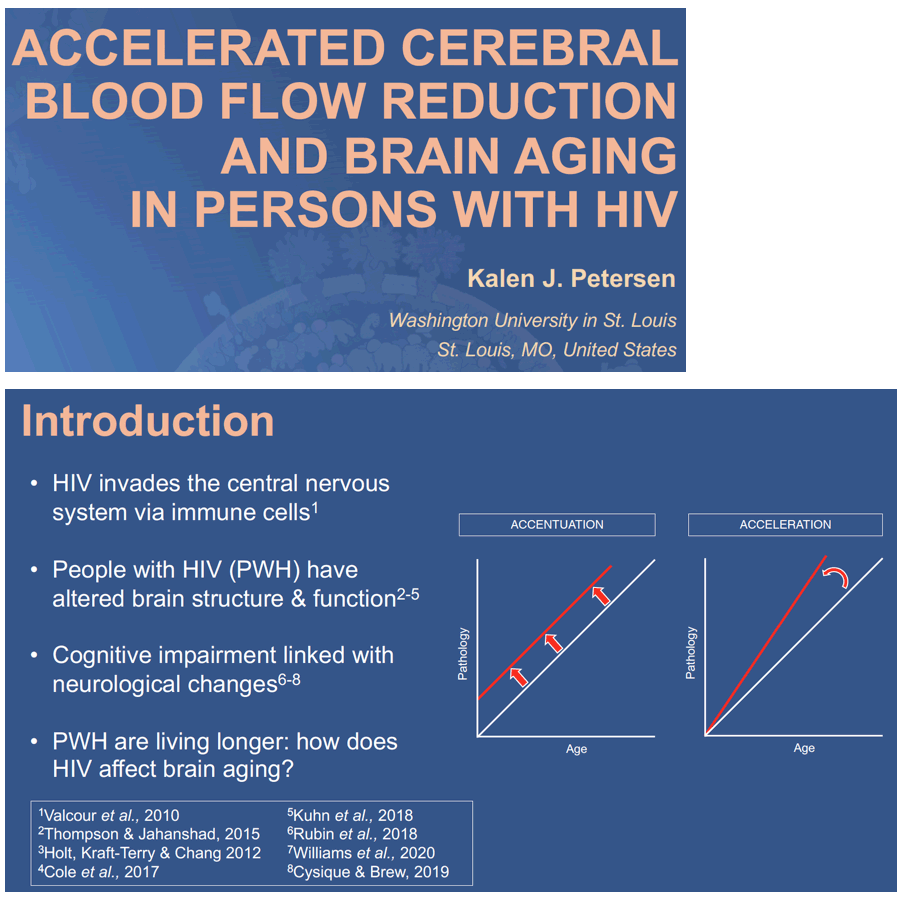
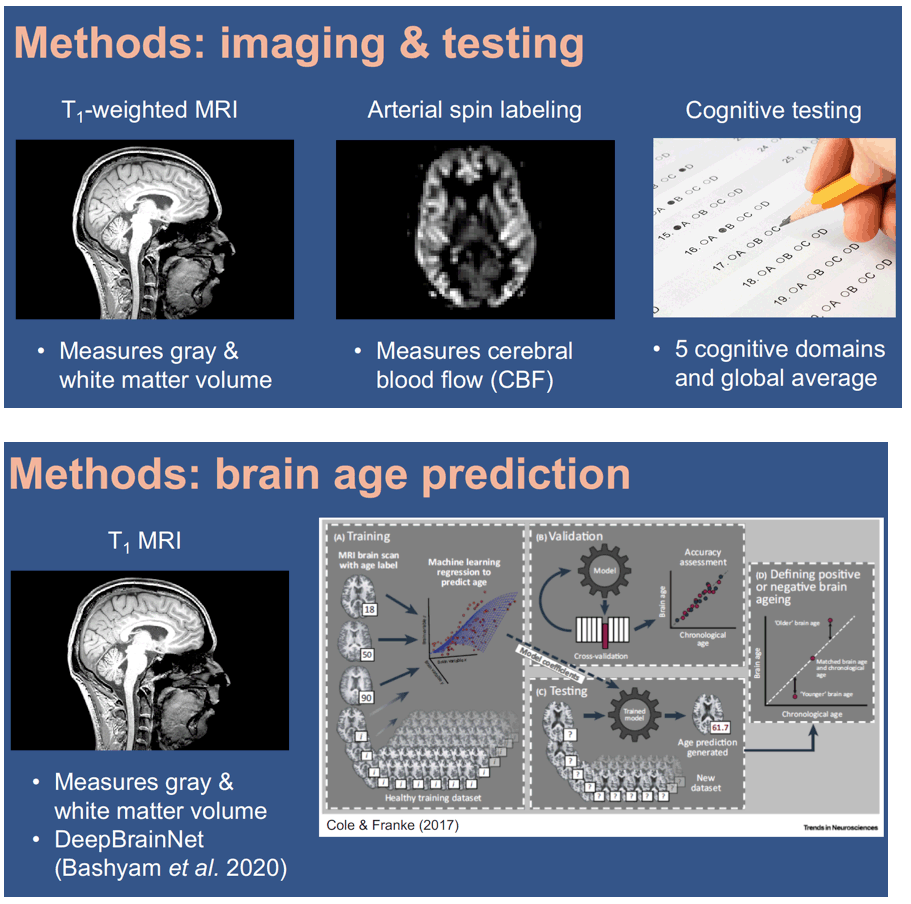
"Despite viral suppression PWH show accelerated structural brain aging.... with no difference between those with detectable or undetectable viral load....we concluded structural aging represents a serostatus effect", Kalen Petersen
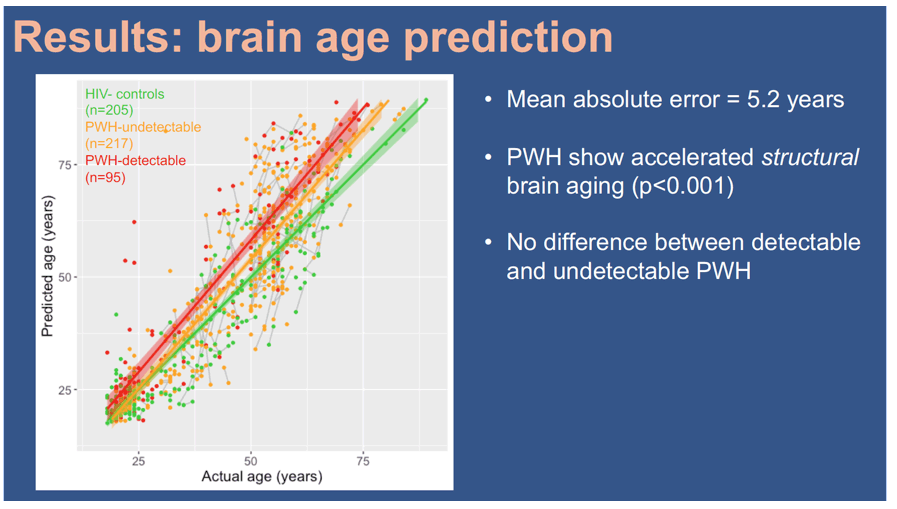
People with undetectable VL showed similar CBF decline as controls (younger HIV-) but those with detectable viral loaf showed greater decline, "indicating that functional brain aging may depend on viral load".
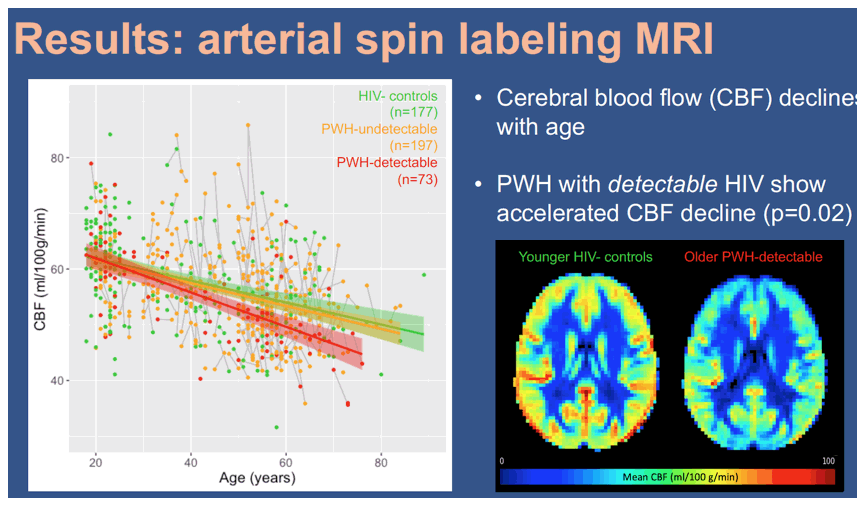
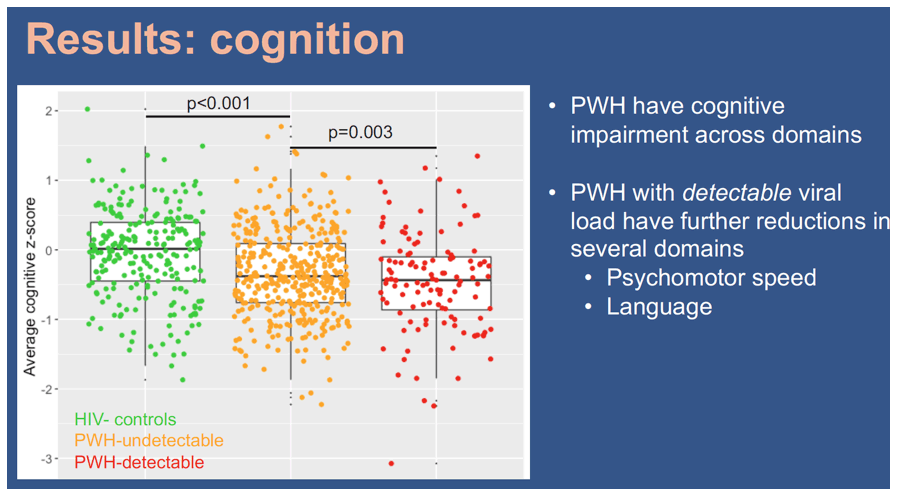
"Greater brain age from structural MRI was associated with diminished psychomotor speed regardless of viral load AND may be an important determinant of cognitive preservation". Kalen Petersen
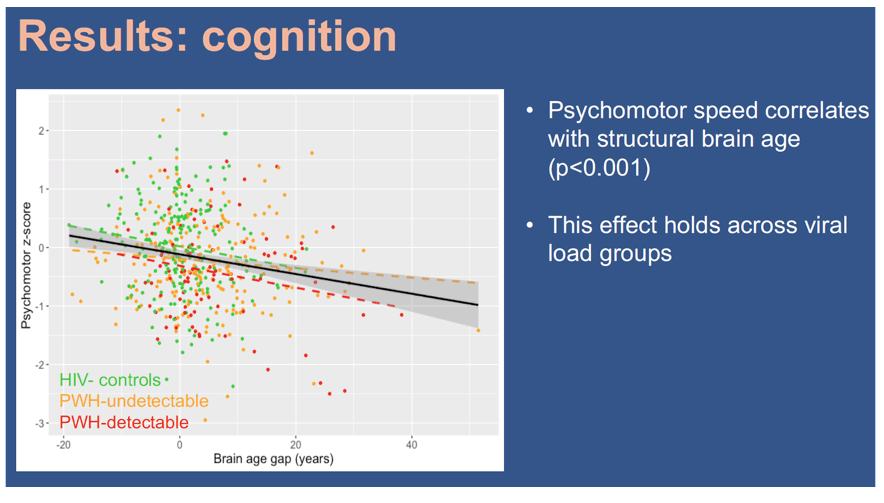
|
| |
|
 |
 |
|
|